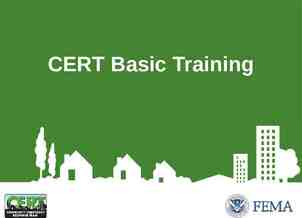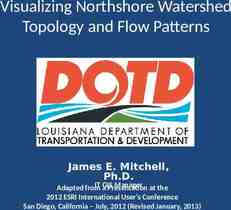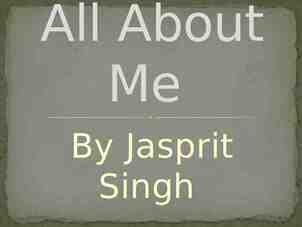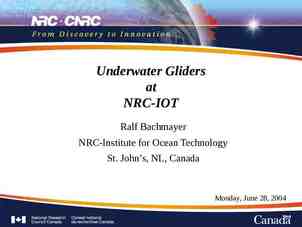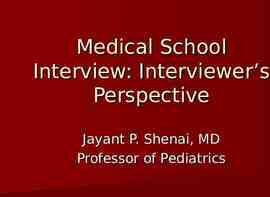Text-Dependent Analysis Fall 2016 Workshop Erin Kunkle
68 Slides3.80 MB

Text-Dependent Analysis Fall 2016 Workshop Erin Kunkle

2016-17 Assessment Overview NeSA-ELA (Grades 3-4) Two Sessions – Independent Writing Items – No Text-Dependent Analysis NeSA-ELA (Grades 5-8) Two Sessions – Independent Writing Items – Text-Dependent Analysis NeSA-Mathematics (Grades 3-8) NeSA-Science (Grades 5, 8) NeSA-ELA/M/S Alternate (Grades 3-8, 11) No NeSA-Writing ACT (Grade 11)

NeSA-English Language Arts (ELA) New Item Types

Multiple Select (MS) Multiple-choice item that includes more than three distractors and more than one correct answer. Worth 2 points

Evidence-Based Selected Response (EBSR) Two part item designed to elicit evidence-based response based on what a student understands from informational and/or literature passage Part One similar to typical MC test question – Student analyzes passage and chooses single best (correct) answer from four answer choices. Part Two elicits evidence from passage and requires student to select an answer based on response provided in Part One – May be MC, MS, or Hot Text Worth two points

EBSR Example

Auto-Scored Constructed Response (ASCR) & Technology-Enhanced (TE) Drag-and-Drop

More ASCR/TE Item Examples Hot Text/Hot Spot Highlighting

Independent Writing Items On NeSA-ELA in Grades 3-8 Assess the following Writing Indicators: 2.1.b Clear topic, intro, body, conclusion 2.1.c Gather and use relevant evidence 2.1.d Compose paragraphs & sentences 2.1.i Avoid Plagiarism 2.2.b Provide evidence to support research & analysis 2.2.d Precise word choice Examples available in the NeSA-ELA Samplers

Part A Which sentence BEST concludes the paragraph? Part B Why is your choice in part A the BEST choice? 3.2.1.b Clear conclusion 10

A student is writing a research report about silent movies. Read the sentences from her report and the directions that follow. Which source would most likely give the student more information about the ideas she has written? 4.2.1.c Gather and use relevant information and evidence to support claims or theses. 11

A student made a plan for a research report. Read the plan and the directions that follow. The student found a source for the research report. Select two sentences that answer the research question. Select two. 6.2.2.b Provide evidence to support research 12

A student is writing a paragraph describing an event. She is looking for more precise words to use. Select two words that could replace went to make the paragraph more precise. Select two. 7.2.2.d Precise word choice 13

Table Talk: Independent Writing Items Indicators for the Independent Writing Items start on page 4 of your Standards handout. Review 2.1.b, 2.1.c, 2.1.d, 2.1.i, 2.2.b, & 2.2.d. What are some of the ways that you already address these standards/indicators in your classroom instruction? How might you provide additional opportunities for students to practice these standards and skills?

Text-Dependent Analysis (TDA)

Text-Dependent Analysis (TDA) TDA task: Read text(s) (informational and/or literature) Respond to a writing prompt based on the text(s) Draw on writing skills while inferring and synthesizing information from the passage(s) to develop a comprehensive response Provide evidence from the passage(s) to support response

Text-Dependent Analysis Text-Dependent Analysis(TDA) (TDA) 2015-16 Grades 5-8, 11- Field Test Grades 3 & 4- Pilot, Cognitive Lab Nebraska Educator Involvement Rangefinding Rubric Analytic Scoring Research Feedback for revisions to TDA Rubric, Writer’s Checklist, and prompt format

Text-Dependent Analysis(TDA) (TDA) Text-Dependent Analysis 2016-17 Grades 3 & 4- No Operational TDA Grades 5, 6, 7, & 8- Operational NeSA-ELA TDA Included on NeSA-ELA in Grades 5-8 One (1) TDA prompt on Operational NeSA-ELA TDA will be on the last passage in Session 1 All Grades 3-8- No Field Testing of TDA

Paired Passages & TDA Paired passages will be included on the NeSAELA test in Grades 3-8. In 2016-17, the TDA will be based on one passage. Paired passages will be included for selected response questions only. This test design will require students to read and answer questions about paired passages, but allows instructional scaffolding for students to develop the skills to write a TDA response to paired passages.

Text-Dependent Analysis (TDA) Format

TDA Format 1. Students read one or two passages 2. Students answer 5-8 questions (MC, EBSR, ASCR) 3. Students respond to ONE TDA prompt 21

TDA Format Box expands as student writes Character Count 75/6000 22

TDA Writer’s Checklist 23

TDA Writer’s Checklist Revised August 2016 Available in the online engine and paper/pencil test booklets Available in English & Spanish May be provided in hard copy to all students

Text-Dependent Analysis (TDA) Rubric

TDA Rubric Development: Process Written by a group of Nebraska educators Grounded in the College & Career Ready ELA Standards Revisions based on feedback from rangefinding, scoring, and educators throughout the state 26

TDA Standards & Indicators 1.6 Reading Comprehension 2.1 Writing Process 2.2 Writing Modes 4.1 Information Fluency

TDA Rubric Domains Analysis of Text Writing Skills Use of Evidence

TDA Rubric Development: Holistic/Analytic TDA Analysis of Text Use of Evidence Writing Skills 3 3 4 2 29

TDA Rubric Revised 30

Rubric Levels 31

Effective Analysis of Text Responds to the prompt (1.6. ) Shows they understood the texts (1.6) Analyzes literal and inferential concepts from the texts (1.6.i) 32

Effective Use of Evidence Locate/organize/evaluates information from texts to answer questions (4.1.a) Provides evidence that is: – specific (1.6.i) – relevant (2.1.c) – accurate – ‘from the text’ (1.6.i, 2.1.c, 2.2.b, 4.1.a) – supports analysis (2.1.c, 2.2.b) – attributed to the sources; avoids plagiarism (2.1.i, 4.1.b) 33

Effective Writing Skills Writes a response that: – is organized (2.1.b, 2.1.e) – is suited to the task (2.1.b, 2.2.a, 2.1.e) – uses precise vocabulary (1.5.c, 2.2.d) – is grammatically correct (2.1.d, 2.1.h) 34

Holistic Rubric Scoring Domains are equally weighted. 35

Table Talk: Rubric Review the TDA Rubric & Writer’s Checklist. – How do the items on the Writer’s Checklist connect to the rubric? How might you use the TDA rubric or Writer’s Checklist in your classroom? What other tools do you use to assess these standards and skills in your classroom? – Best practices from Six Traits?

TDA Scoring TDA is not a standalone test; score is part of the overall NeSA-ELA TDA will be single scored holistically using rubric at DRC Range is set by Nebraska educators – Committee consensus scores papers; discuss what constitutes a 1, 2, 3, or 4 – Committee’s comments become the annotations for the scoring guide used to train readers – Validation papers also committee scored Writing Director is present throughout scoring

Text-Dependent Analysis (TDA) Prompt Structure

TDA Text-based Questions Text-based questions

Text-based questions & TDA Text-Based Questions Read closely Evidence from text to support reasoning May focus on a word, sentence, paragraph, section, or the entire text Variety of formats, questions, and prompt structures Evaluated in a variety of ways NeSA TDA Read closely Evidence from text to support reasoning & analysis Focuses on the entire text Specific prompt structure Evaluated on TDA Rubric

TDA Prompt Format 1. Set up/Lead in naming passage 2. Prompt 3. “Write a well-organized response using specific evidence from the (passage/poem/story) to support your answer.” Note: The word “structured” has been removed from sentence 3. 41

TDA Prompt Guidelines – No “pop quizzes” – Goes beyond what has been considered typical grade level complexity – Road Map vs. Road Signs 42

TDA Prompt Read the definition below. phenomenon: an unusual or significant fact or event In the last sentence of “Highway of Water,” the author claims the Panama Canal is a phenomenon. Analyze how the author supports this claim throughout the passage. Write a well-organized response using specific evidence from the passage to support your answer.

Examples & Non-Examples Not TDA Give three examples of how animals sleep in different ways. Text-Dependent Analysis Both passages tell about ways that different animals sleep in the wild. Explain why animals sleep in different ways. Write a well-organized response using specific evidence from BOTH passages to support your answer. Identify the literary Mood is the feeling or emotion that a reader devices the author experiences from a poem or story. Explain uses in the story. how the poet’s word choice helps create Provide evidence mood throughout the poem. Write a wellfrom the story in organized response using specific evidence your response. from the poem to support your answer.

Table Talk: TDA in the Classroom How might you help students to navigate the TDA prompt format? –In order to understand what it is asking? –How to approach responding to the prompt? How might you incorporate text-based writing into your classroom instruction? –Do your classrooms texts/series incorporate evidence-based writing?

TDA Prompt Development TDA Prompts are written by Nebraska educators along with other NeSA-ELA and Check4Learning items TDA Prompts for NeSA-ELA are field tested by Nebraska students – Rangefinding by Nebraska educators of all field test prompts

TDA Prompts & Standards Individual TDA prompts are aligned to one of the following 1.6 Reading Comprehension indicators: 1.6.a 1.6.b 1.6.c 1.6.d 1.6.e 1.6.f 1.6.g 1.6.h 1.6.i 1.6.j 47

Table Talk: TDA Indicators Indicators for the TDA start on page 1 of your Standards handout. Review 1.6.a-j. – Look across grade levels: What is the thread that pulls through the indicator? At what grade does the level of skill/rigor for your students begin? What level of skill/rigor are students expected to achieve at the next grade levels? What are some of the ways that you already address these standards/indicators in your classroom instruction?

1.6.a Author’s Purpose/Perspective Grade 4 The author of “Female Olympic Pioneer” states that the Olympic games of 1900 “were not advertised very well.” Explain how the author supports this idea throughout the passage. Write a well-organized response using specific evidence from the passage to support your answer. Grade 7 The author’s perspective is how the author feels about the subject. Analyze how the author’s perspective influences word choice in “Gutzon Borglum’s Monumental Talent.” Write a well-organized response using specific evidence from the passage to support your answer.

1.6.b Elements of Literary Text Grade 3 In “Cory’s Big Idea,” Cory has many positive character traits. Explain how the events of the story show that Cory is generous and helpful. Write a well-organized response using specific evidence from the story to support your answer. Grade 6 In the story “Stormy Weather,” Arthur’s feelings about helping his neighbor change throughout the story. Analyze how the author shows this change through Arthur’s thoughts, words, and actions. Write a well-organized response using specific evidence from the story to support your answer.

1.6.c Literary Devices Grade 5 Imagery is language that helps the reader imagine pictures in their mind. Explain how the poet’s word choice creates imagery in “The Appetite of a Ship.” Write a wellorganized response using specific evidence from the poem to support your answer. Grade 6 Mood is the feeling or emotion that a reader experiences from a poem or story. Explain how the poet’s word choice helps create mood throughout the poem “Campfire.” Write a well-organized response using specific evidence from the poem to support your answer.

1.6.d Theme Grade 3 A theme of "Luke’s Paper Crane” is the importance of family. Explain how key details in the story support this theme. Write a wellorganized response using specific evidence from the story to support your answer. Grade 8 One theme of “Mustang” is the beauty of freedom. Analyze how the poet uses detailed description of the mustang to support this theme. Write a wellorganized response using specific evidence from the poem to support your answer.

1.6.e Main Idea Grade 3 One of the main ideas of “Philo and the Television” is that “thinking about how things work can lead to brand new ideas.” Explain how the author supports this main idea throughout the passage. Write a wellorganized response using specific evidence from the passage to support your answer. Grade 5 Read the definition below. theories: possible explanations of how something was created “Who Invented the Ice-Cream Cone?” is about the creation of the ice cream cone. Analyze how the author presents different theories about how the ice cream cone was created. Write a well-organized response using specific evidence from the passage to support your answer.

1.6.f Text Features Grade 5 The passage “Seeing the Invisible” discusses the development of the microscope. Explain how the headings in the passage help the reader understand the information in the passage. Write a well-organized response using specific evidence from the passage to support your answer. Grade 6 The author of “Omaha’s Legendary Baseball Pitcher” provides a table titled “Bob Gibson’s Awards.” Explain how this table helps the reader better understand the information in passage. Write a well-organized response using specific evidence from the passage to support your answer.

1.6.g Characteristics of Text Grade 7 “Ice Harvest” is an example of historical fiction. Analyze the characteristics of the story that help the reader understand it is historical fiction. Write a wellorganized response using specific evidence from the story to support your answer.

1.6.h Multicultural Perspective Grade 3 “The Mighty Bison” explains how human actions have impacted bison. Explain how humans have affected the bison in the past and present. Write a wellorganized response using evidence from the passage to support your answer. Grade 7 “Adventurous Storyteller” provides biographical information about Jack London, the author of The Call of the Wild. Explain how London’s life influenced his writing. Write a well-organized response using specific evidence from BOTH passages to support your answer.

1.6.i Inferential & Critical Questions Grade 7 The passage “The World’s Tallest Trees—The Redwoods” provides information about redwood trees. Write a narrative describing a visit to a redwood forest. Write a well-organized response using specific evidence from the passage to support your answer. Grade 11 In “Spring Forward, Fall Back,” the author discusses the history of why Daylight Savings Time was implemented. Analyze whether or not Daylight Savings Time is still necessary today. Write a well-organized response using specific evidence from the passage to support your answer.

1.6.j Organizational Patterns Grade 4 Grade 6 The author of “Small Libraries with Big Dreams” compares and contrasts Little Free Libraries with public libraries. Explain how this organizational pattern helps the reader better understand Little Free Libraries. Write a well-organized response using specific evidence from the passage to support your answer. The author uses chronological order to organize the information in “Chalk Mine Is Nebraska Treasure.” Explain how this organizational pattern helps the reader better understand the geological and historic value of Happy Jack Chalk Mine. Write a wellorganized response using specific evidence from the passage to support your answer.

Prompt Brainstorming Elbow Partners Resources: Passage, TDA Prompt Guidelines, Example Items, Standards 1. Using the provided passage, practice writing a TDA prompt. 2. Review with table group 3. Record prompts on lined yellow lined post-it and put up on Prompts poster. Include: – Name of text in prompt – Which indicator it is aligned to (1.6.x)

Text-Dependent Analysis (TDA) Resources

TDA Resources TDA Resources TDA Resources provided for Grades 3-8, 11 https://www.education.ne.gov/assessment/Text Dependent Analysis.html Revised Rubric & Writer’s Checklist (Summer 2016) Sampler Items Include 2 TDAs per grade level with examples of 1, 2, 3, 4 https://www.education.ne.gov/Assessment/NeSA ELA Transition.html Practice Test TDAs in Check4Learning (Coming November) Additional Scoring Guides (Coming late Fall)

Check for Learning ELA – Existing items were realigned to new standards – 6-7 new passages per grade TE and MC Available September 30 TDA available November 18 – TDA response will save – Teachers can view and print TDAs – Can enter TDA score

NeSA NeSA Practice Opportunities Practice Tests Practice Tests In INSIGHT Provide raw scores (such as 15/18) Save written responses (TDA, Writing) Require test tickets (single administration) Guided Practice Tests & Online Tools Training Using Chrome browser: https ://wbte.drcedirect.com/NE/p ortals/ne No raw scores No saved written responses (TDA, Writing) Generic login, no test tickets

Table Talk What might be some of the ways you use these resources to familiarize your students with NeSA-ELA TDA? What are some additional resources you might use to address these standards and skills in your classroom?

Q&A

TDA Scoring Remaining Questions The following are still being finalized: How does TDA fit into design into the test (# of points)? How will the TDA score be included in reporting? More information coming soon.

Contact Information Erin Kunkle Statewide Writing Director Nebraska Department of Education [email protected] https://www.education.ne.gov/Assessment/Text Dependent Analysis.html

THANK YOU!

